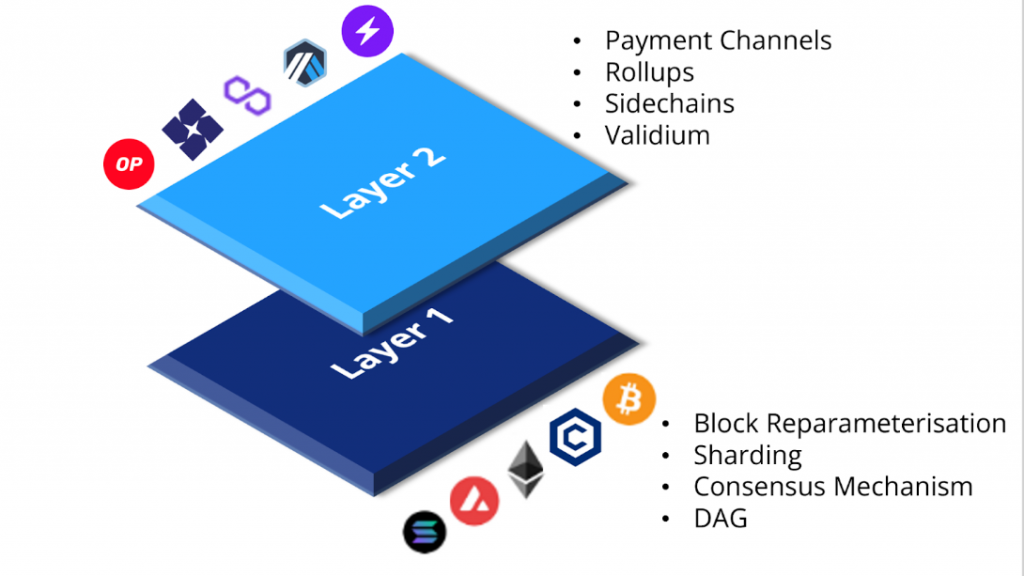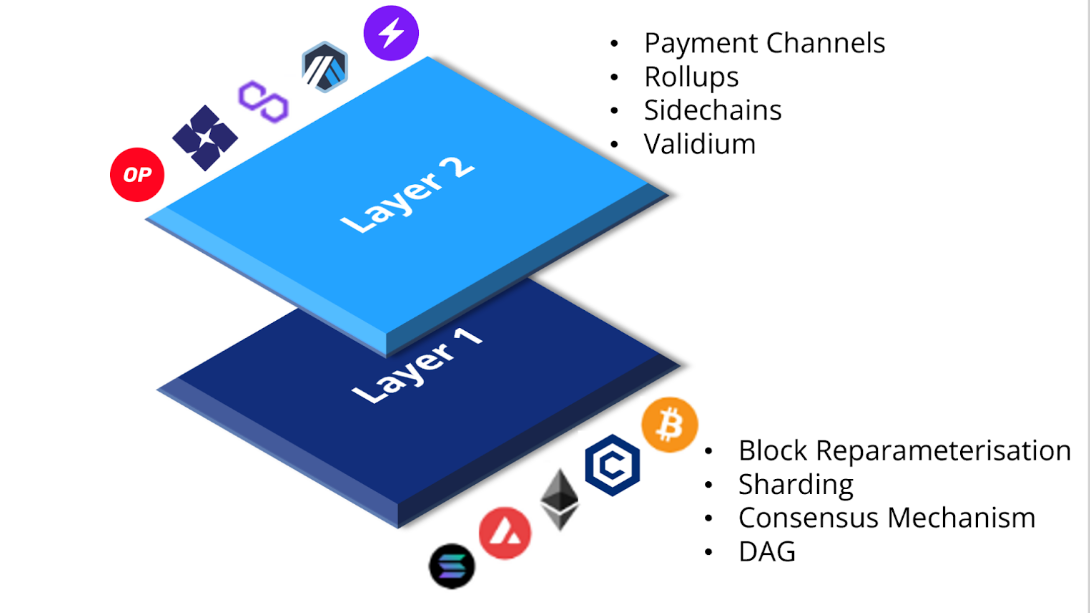Let’s break down the difference between Layer 1 and Layer 2 blockchains in simple terms with examples.

Layer 1 Blockchain:
- Definition: Layer 1 refers to the main blockchain layer where the primary transactions and validations occur.
- Example: Bitcoin and Ethereum are examples of Layer 1 blockchains. In these networks, every transaction, smart contract execution, and validation of data happen directly on the main blockchain.
- Key Features:
- All transactions are settled on the main chain.
- High security as transactions are directly secured by the underlying blockchain’s consensus mechanism.
- Slower transaction speed and higher fees due to the comprehensive validation process.
Layer 2 Blockchain:
- Definition: Layer 2 is built on top of Layer 1 and is designed to enhance the scalability and efficiency of transactions.
- Example: The Lightning Network for Bitcoin and Optimistic Rollups for Ethereum are Layer 2 solutions. They handle multiple transactions off the main blockchain and only submit a summarized version to Layer 1.
- Key Features:
- Faster and cheaper transactions as most interactions happen off-chain.
- Utilizes the security of the underlying Layer 1 but with reduced direct interaction.
- Enables the network to handle a larger number of transactions without congesting the main blockchain.
Analogy:
Think of Layer 1 as the main highway where all the major traffic (transactions) takes place. Layer 2 is like a series of express lanes or service roads alongside the main highway. Most of the traffic moves smoothly on these express lanes, only occasionally interacting with the main highway.
In summary, Layer 1 is the foundational blockchain, while Layer 2 solutions are additional layers designed to alleviate congestion and improve the speed and cost efficiency of transactions.
We will try to share everyday one article where will define crypto concepts using simple words to help general audience understand theose concepts

